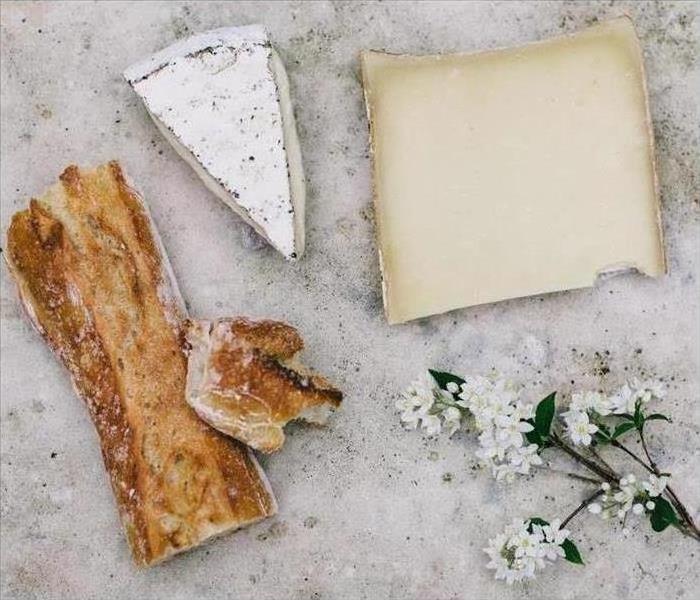What if there's Mold on my food?
5/10/2024 (Permalink)
Have you ever noticed a few green or black spots of mold on the slice of bread or cheese you were about to eat? If the spots are small and look easy to pinch off, it’s pretty tempting to try salvaging. But, you run the risk of getting sick!
First, it’s important to know that simply cutting or scrapping mold off your bread, strawberry, etc. won’t save you from ingesting mold. The mold has already rooted itself in your food, so what you're looking at are surface spores. Even if you no longer see it, the mold has already made its home in your food. So yes, your piece of bread or cheese is more contaminated than you think!
Consuming moldy food can be harmful. Bacteria can grow along with the mold, and it’s easy for mold to contaminate porous foods like bread.
For example, black bread mold is a rarer, but very dangerous mold that grows on bread. It can cause serious infection. It’s best to toss out the moldy bread!
Mycotoxins, a toxic substance, can be produced by certain molds usually found in grain and nut crops. Mycotoxins can also contaminate apples, celery, grapes and other produce. Consumption of mycotoxins can cause respiratory problems and allergic reactions.
Additionally, if you see mold on any of the following, throw it away:
- Lunch meat
- Bacon
- Hot dogs
- Cooked pasta
- Cream or cottage cheese
- Tomatoes
- Citrus fruits
- Peaches
- Peanut better
- Jelly (mycotoxins commonly found within the mold in jams and jellies)
- And yes… bread!
A few food items you can cut the mold off from include:
- Cabbage
- Carrots
- Hard cheese
- Hard salami
- Dry-cured country hams
Best advice: When in doubt, throw it out!






 24/7 Emergency Service
24/7 Emergency Service
